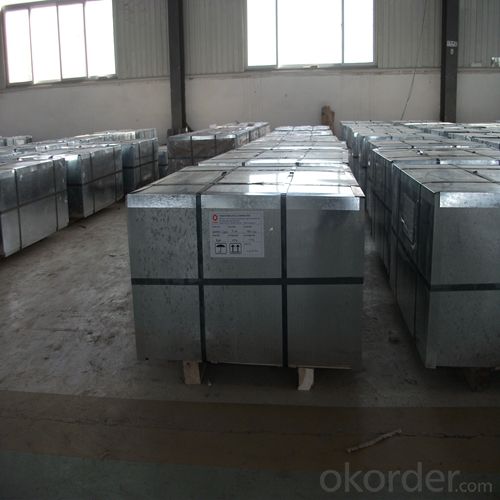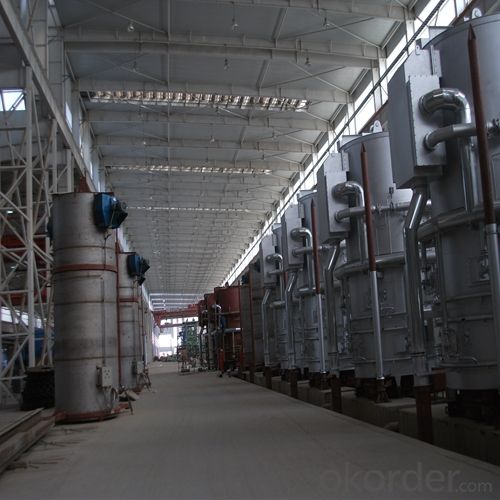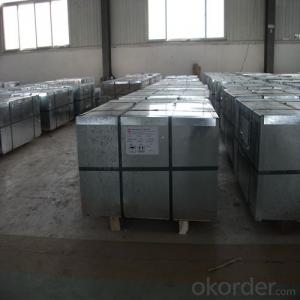Electrolytic Tinplate of Prime Quality for Chemical Use 0.32mm Thickness
- Loading Port:
- Qingdao
- Payment Terms:
- TT or LC
- Min Order Qty:
- 25 m.t.
- Supply Capability:
- 30000 m.t./month
OKorder Service Pledge
OKorder Financial Service
You Might Also Like
1.Structure of Electrolytic Tinplate of Prime Quality for Chemical Use 0.32mm Thickness Description
Electrolytic Tinplate, is one thin steel sheet with a coating of tin applied by electrolytic deposition. Tinplate made by this process is essentially a sandwich in which the central core is strip steel. This core is cleaned in a pickling solution and then fed through tanks containing electrolyte, where tin is deposited on both sides. As the strip passes between high-frequency electric induction coils, it is heated so that the tin coating melts and flows to form a lustrous coat.
2.Main Features of the Electrolytic Tinplate of Prime Quality for Chemical Use 0.32mm Thickness
The salient feature of DR Tinplate is the combination of higher strength and sufficient ductility, which enables much thinner Tinplate to be used, compared to Single Reduced Tinplate resulting in Substantial economic savings.
According to the steel chemistry and annealing process, the second reduction (DR08) can be between 27% to 40%, thereby producing strengths upto 550 +/-50 N/mm2, whereas single reduced material has strength less than 450 N/mm2 &DR 09 (Hard DR) is produced at temper mill with reduction % in range of 27-35 % & will strength upto 690 N/mm2 to the produced material.
Tinning is the process of thinly coating sheets of wrought iron or steel with tin, and the resulting product is known as tinplate. It is most often used to prevent rust.
While once more widely used, the primary use of tinplate now is the manufacture of tin cans. Formerly, tinplate was used for cheap pots, pans and other holloware.
3.Electrolytic Tinplate of Prime Quality for Chemical Use 0.32mm Thickness Images



4.Electrolytic Tinplate of Prime Quality for Chemical Use 0.32mm Thickness Specification
Standard: ISO 11949 -1995, GB/T2520-2000,JIS G3303,ASTM A623, BS EN 10202
Material: MR
Thickness:0.32mm
Width: 600mm -1150mm
Temper: T1-T5
Annealing: BA & CA
Coil Inner Diameter: 508mm
Weight: 6-10 tons/coil 1~1.7 tons/sheets bundle
Passivation:311
Oil: DOS
Surface: Finish,bright,stone,matte,silver
5.FAQ of Electrolytic Tinplate of Prime Quality for Chemical Use 0.32mm Thickness
- How are the tinplates specified?
The tinplates are specified as per the steel base, extent of tempering, the coating weight, annealing method and the surface finish.
- How many types there are for base steels?
The base steels are of three types: Type MR, L, D
- Q:How long does tinplate packaging last?
- Tinplate packaging can last for several years, depending on the storage conditions and how well it is maintained.
- Q:Is tinplate safe for food contact?
- Yes, tinplate is safe for food contact. It is commonly used for food packaging as it is non-toxic, resistant to corrosion, and provides an effective barrier against moisture, oxygen, and light.
- Q:What are the weight advantages of using tinplate?
- Tinplate offers several weight advantages compared to other packaging materials. Firstly, it is significantly lighter than materials like glass or aluminum, making it easier to handle and transport. This lightweight nature also contributes to lower shipping costs. Additionally, tinplate's lightness allows for more product to be packaged in a smaller space, maximizing efficiency and reducing storage requirements. Overall, the weight advantages of tinplate make it a preferred choice for many industries seeking cost-effective and efficient packaging solutions.
- Q:How is tinplate used in the production of aerosol valves?
- Tinplate is used in the production of aerosol valves as it provides a protective and corrosion-resistant coating to the valve components. This prevents the valve from rusting or reacting with the contents of the aerosol, ensuring the reliable and safe functioning of the aerosol valve.
- Q:The difference between a matte tin plate and a bright tin plate
- Tin ma:Rough processing refers to electroplating in the original plate after passivation, not by tin matte soft melting process. It has a unique and elegant silver gray surface, and it has high adhesiveness after coating. It is used in bottle caps and printing cans.
- Q:What are the different ways to open tinplate containers?
- There are several ways to open tinplate containers, including using a can opener, a key, a sharp knife, or even a spoon to pry open the lid.
- Q:What is the use of tinplate printing tin, storage of food safety
- Tinplate was first imported into China from abroad. It is a kind of iron with better quality and is made of extremely thin iron sheet
- Q:What are the welding methods used for tinplate?
- The welding methods commonly used for tinplate are spot welding, seam welding, and resistance welding. These methods ensure a strong and durable bond between tinplate sheets, making them suitable for various applications such as food cans and packaging materials.
- Q:What are the main challenges in tinplate transportation?
- The main challenges in tinplate transportation include ensuring the proper handling and protection of tinplate materials to prevent damage or deformation during transit, managing the weight and size of the products to optimize shipping costs, and addressing any potential corrosion risks that may arise due to exposure to moisture or other environmental factors. Additionally, coordinating logistics and finding efficient transportation methods to ensure timely delivery and minimize any disruptions in the supply chain are also key challenges in tinplate transportation.
- Q:How does tinplate perform in terms of resistance to chemical agents?
- Tinplate generally exhibits good resistance to chemical agents due to the protective layer of tin coating. This coating acts as a barrier, preventing direct contact between the metal and the chemicals, thereby minimizing the risk of corrosion or chemical reactions. However, the specific performance can vary depending on the type and concentration of the chemical, as well as the duration of exposure.
1. Manufacturer Overview |
|
|---|---|
| Location | |
| Year Established | |
| Annual Output Value | |
| Main Markets | |
| Company Certifications | |
2. Manufacturer Certificates |
|
|---|---|
| a) Certification Name | |
| Range | |
| Reference | |
| Validity Period | |
3. Manufacturer Capability |
|
|---|---|
| a)Trade Capacity | |
| Nearest Port | |
| Export Percentage | |
| No.of Employees in Trade Department | |
| Language Spoken: | |
| b)Factory Information | |
| Factory Size: | |
| No. of Production Lines | |
| Contract Manufacturing | |
| Product Price Range | |
Send your message to us
Electrolytic Tinplate of Prime Quality for Chemical Use 0.32mm Thickness
- Loading Port:
- Qingdao
- Payment Terms:
- TT or LC
- Min Order Qty:
- 25 m.t.
- Supply Capability:
- 30000 m.t./month
OKorder Service Pledge
OKorder Financial Service
Similar products
New products
Hot products
Hot Searches
Related keywords



























